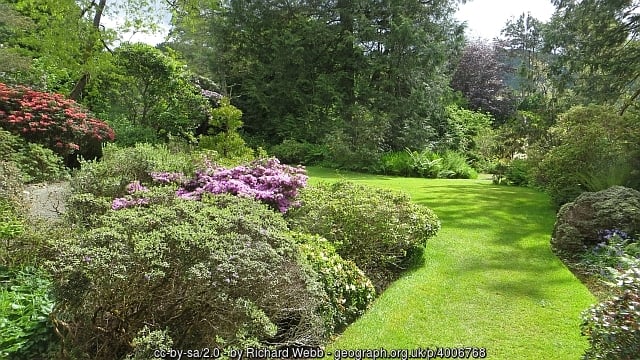Lawns - try the basic or intensive autumn care plan!
Lawns aren’t looking their best where I live. After a summer of heavy use, and just recently a lot of rain, the grass has some thin patches, while in others it has grown long and straggly (thanks to the rain). The good news is that the recent rain means I can start on my annual autumn lawn rejuvenation plan now.

Autumn lawn care includes raking out weeds: a work out for you as well as the daisies. Sarah Buchanan
If your lawn is looking the worse for wear too, here are my basic and intensive care plans for autumn action.
1. The basic autumn lawn care plan
- Mow the grass and pick up the cuttings (put them on your garden compost heap or under fruit bushes as a mulch).
- Skip the gym, and use a long ‘spring’ rake to rake out old grass, weeds and moss (or if you have a large lawn, hire or borrow a powered lawn rake). Add your rakings to the compost heap. The lawn might look worse initially with patches and thin areas, but it will recover. Trust me!
- Mow the grass, but at right angles to the way you mowed it before, and collect the clippings again.
- ‘Spike’ the lawn by stabbing a garden fork into it every 10-15cms (4-6 inches) about 8- 10 cms (3-4 inches) deep. Start where the lawn is most compacted, mossy or slippery, and keep going! Do this every year if you have moss or damp areas. Every two or three years is OK elsewhere.
- Feed it with a low nitrogen ‘autumn feed’ that will toughen the grass for next year.
2. The intensive lawn care and repair plan
Bald patches: use a fork to roughen the area, sprinkle lawn seed over it and cover that with a thin layer of seed compost. If it doesn’t rain – water it in. Keep dogs, footballs and feet off these areas until the spring.
Hollows: for a shallow hollow, sprinkle compost over the grass in the hollow through the summer (next summer). For larger dips and hollows spike the grass that is there, fill the hollow with compost, firm the surface and make sure it's level before you sow seed as for a bald patch.
Lumps and bumps: push the blade of a spade or turf cutter under the lumpy bit and remove the turf. Dig down to remove the lump or bump and level the soil. Replace the turf and water it in. Be careful not to dig down too deep or you will end up with a hollow next year.

This field at the aptly named 'Corse Lawn' looks like a giant version of my back garden this week: long and uneven grass over lumps and bumps and tricky bits. Bring on intensive care!
3. New lawns
September is a good time to start a new lawn – whether with turf or seed – because you aren’t likely to need to water it through a drought. Preparation is all with new lawns – and that means preparing the soil to remove stones and weeds. If the soil is poor, mix in well rotted garden compost or other organic matter such as spent mushroom compost. Add a little fertiliser and rake the whole area over well. Firm it by stamping firmly in regular lines across the space. Finally rake the whole thing over lightly. It should look and feel like cake crumbs when it is ready.
Sow seed evenly across the patch and then rake it in loosely. If it doesn’t rain for a couple of days afterwards, water it lightly using a sprinkler. And just like bald patches, keep feet, dogs and footballs off it until the spring.

The lovely lawns at Arduaine Garden (thanks to Richard Webb) are better than my patch of grass will ever be, but a little TLC goes a long way in the autumn, so I am looking forward to a better lawn next year. Are you?
Lawns are an important part of many gardens, give yours some TLC to prepare it for next year.
Sign up for our emails below, so we can send you blogs on gardening tips, as well as updates on our sales, so you don’t miss out on those garden furniture bargains!







